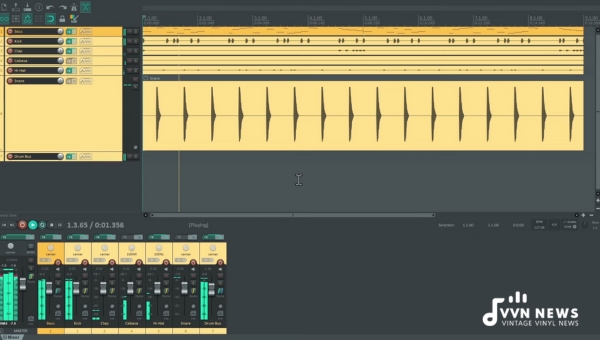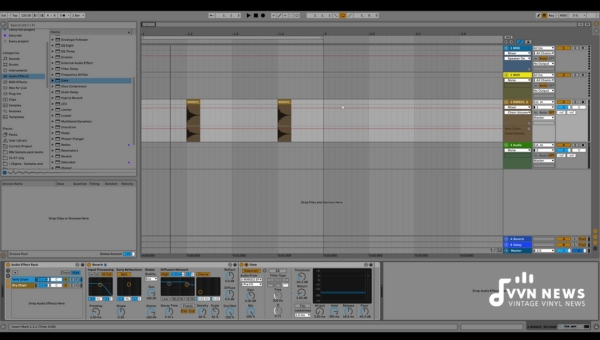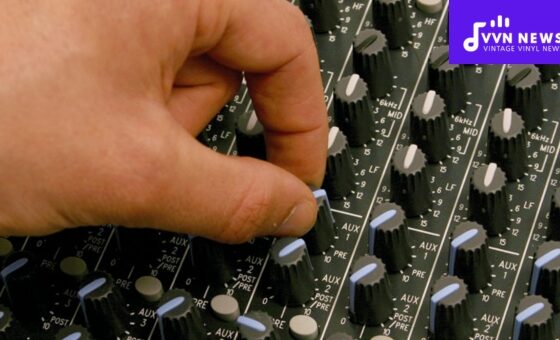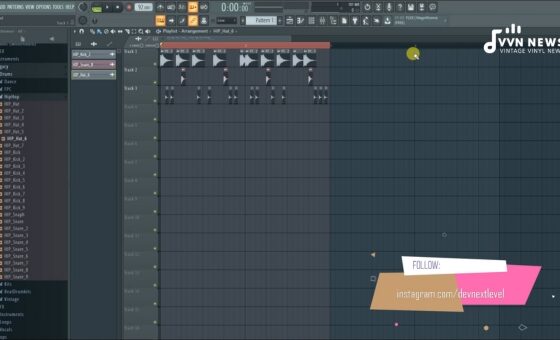In sound engineering, few techniques have made as marked an impact as gated reverb.
Introduced to popular music in the late 1970s and early 1980s, this audio-processing technique has shaped and forever altered the auditory landscape of popular culture.
When I twirl the dial on a classic rock station or descend into a deep dive of ’80s playlists, I can’t escape the vibrant resonance of gated reverb.
The distinct shattering echo effect that fills arenas and captures musical epochs is intricately tied to this technique.
The rich sonic fabric weaved by Phil Collins and Bruce Springsteen owes much to those haunting reverberations.
Essentially, these icons’ timeless sounds trace back to their sound engineers’ imaginative use of gated reverb.
What is Gated Reverb?
Gated reverb is a processing technique commonly used in audio production. Originating in the 80s, this technique applies a noise gate, an electronic device or software that allows signals above a certain threshold to pass through and prevents signals under this threshold from passing to a reverb send.
The result of applying gated reverb is a powerful and resonant sound that abruptly cuts off after reaching the threshold level. This technique significantly shaped the tone and character of audio signals.
It was predominantly used for adding depth and sustain to snare drum sounds in various forms of music during the 80s, including pop, rock, and dance genres.
The ‘gate’ refers to a device or plugin used in audio production to control the volume of an audio signal.
The magic here lies in setting the gate ‘threshold,’ where most of the initial punchy sound gets through, but the remaining tail of redundancy is cut off.
This technique allows for a larger-than-life drum sound without washing out the final mix in reverb.
The iconic use of gated reverb has led to some dramatic accents in music genres from pop and rock to hip-hop and beyond.
Origin of Gated Drums

The conceptualization of gated reverb is often traced back to the iconic drummer Phil Collins.
Its development is almost serendipitous, highlighting the beauty inherent in spontaneous creativity. During the late 1970s, Collins worked with Peter Gabriel on his self-titled album.
The scene then was ripe for unanticipated breakthroughs. With sound engineer Hugh Padgham at the controls of an SSL E-Series desk, they discovered a way to create a distinct percussive sound.
At that time, SSL consoles had a “talkback” feature incorporating heavy compression and noise-gating.
When Collins played the drums through the talkback mic, they were amazed by the powerfully controlled reverb effect that resulted.
This ‘accidental’ experiment heralded an unforgettable moment in music production history.
It gifted us with what we now term as “gated reverb.” The sound first prominently featured on Intruder, one of Gabriel’s tracks from his 1980 album, later dominating Phil Collins’s solo hit “In The Air Tonight.”
This revolutionary technique forever altered how we perceive drum sounds and paved the way for future innovation.
Since that fateful studio session, gated reverb has rooted its impact across various music genres—typically identifiable in pop, rock, and hip-hop.
Its legacy continues today as it shapes contemporary music forms to create a familiar vibe from past decades.
Also Read: Plate Reverb [What It Is And How To Use It In 2025]
How to Create Gated Reverb Drums
Creating a gated reverb drum effect, a classic ’80s sound technique might initially feel daunting.
But with this comprehensive guide, you can make those iconic beats with just a few simple steps. Here’s how.
Step 1: Open Your DAW
First, you must open up your digital audio workstation (DAW). The method will generally be the same across platforms, whether it’s Pro Tools, FL Studio, Ableton Live, or any other software.
Step 2: Add Reverb to the Snare
Next, add reverb to your snare track. Select reverb from your DAW’s list of effects and apply it to the snare sound.
Don’t be discouraged by the messy echo— that’s all part of the process! The aim is to get a big echoing reverb that will soon be polished and perfected in Step 3.
Reverb Settings
To achieve that ultimate gated reverb drum sound, you need to understand and appropriately adjust these settings:
- Dry: The “dry” control determines how loud the original (non-reverberated) signal is.
- Wetness: The “wetness” parameter adjusts how prominent your reverb effect is about the dry signal.
Too much dry signal will steer us away from our goal, and too much wet signal will drown our original sound in echo. Finding a balance between these settings is critical.
Step 3: Gate the Reverb
Gating is where the magic happens—rough-cast twang transmutes into controlled, crisp drum sounds! Apply a noise gate effect after your reverb in your effects chain.
This gate bars all signals below a certain volume threshold from passing through—giving us that abrupt cut-off characteristic of gated reverb.
Noise Gate Settings
Understanding these noise gate parameters will further help craft that classic sound:
- Threshold: Adjusting the point determines when exactly the gate closes or opens. This defines what signals can pass through and what gets cut off.
- Reduction: This sets how drastically your audio will drop in volume once it is below the threshold.
- Attack: This setting determines how fast noise reduction starts once the signal drops below the threshold.
- Hold: Defines how long the gate ‘stays open’ even after signals drop under the threshold.
- Release: Adjusting release sets when noise reduction stops after crossing above the threshold again.
Step 4: Blend It All
Now that we have both processed tracks—the original snare and its reverberated illusion—the task is to blend them seamlessly for maximum impact.
Too much reverb may result in a lack of clarity, whereas too little makes for an underwhelming effect.
Each track’s interaction with room acoustics varies, so there’s no ‘one-size-fits-all’ setting here.
You must play around until you find your desired balance between snare hits’ punchiness and their trailing echoes—an amalgamation creating larger-than-life drums!
Once satisfied with adjustments on individual settings, give it one last listen—from start to end—to ensure everything fits together flawlessly.
Also Read: What Is Tape Saturation And Plugins? [Top Saturation Plugins]
Best Plugins For Gated Reverb

In the dynamic world of sound engineering, myriad plugins are available that simulate gated reverb, each with unique flavors.
These virtual modules can come in handy for adding individual elements and depth to your tracks. I have shortlisted five of these cutting-edge plugins, which remain fan favorites.
Smart Electronix Ambience – Free and Easy-to-Use
The Smart Electronix Ambience plugin is a beautiful place to start if you are stepping into gated reverb. The layout is user-friendly and intuitive, even for those new to the process.
The configuration is simple, but don’t let this fool you—the sound capability is fantastic.
You can achieve excellent results by playing around with the ‘shape’ parameter within the gate section.
This option adjusts between direct and reflective sounds, helping fine-tune your reverb tail projects.
Goodhertz Megaverb – A Digital Giant
Goodhertz Megaverb promises an amalgamation of phenomenal digital reverb effects from the ‘80s and modern design twists.
Its signature sound borrows heavily from early digital units yet remains distinctively contemporary.
MegaVerb’s innovative design allows you to swap between gated, room, and hall reverbs while consistently preserving your mix’s dry character.
The intuitive user interface makes complex tailoring effortless—allowing even beginners to craft vintage tones easily.
Valhalla Vintage Verb – Versatile and Value-Filled
The Valhalla Vintage Verb offers a vast palette of reverb effects inspired by classic hardware—the ‘70s, ‘80s up to now units’ nuances flawlessly encapsulated in an efficient interface.
One attribute that makes it stand apart among other plugins is its intricately designed color modes, adjusting tonality based on vintage eras: 1970s (darker), 1980s (brighter), and Modern (transparent).
It grants you flexibility over high-frequency damping, matching various music styles seamlessly.
UA AMS RMX16 – An Industry Classic
While UA plugins may demand a premium price tag, their reputation for delivering quality cannot be overstated. The UA AMS RMX16 is a reputed plugin in music production circles.
The original version was beloved by many industry legends throughout the 1980s for its ability to infuse their tracks with signature ‘larger than life’ atmospheres.
This software reincarnation embodies all of its predecessor’s charm while updating its performance capabilities into modern recording environments.
It allows absolute control over various parameters, including decay time, pre-delay time, and modulation depth per algorithm.
Omniverb – Affordable And Convenient
This plugin truly lives up to its name by delivering various reverberation types—from soft room-like reverbs to complex gates or inverse effects.
Users can manually tailor decay rates at different frequencies using damping filters—an unusual feature not regularly seen in standard reverb units offering comprehensive tweak ability through relatively few controls.
These plugins exude their individual draws, some bursting forth with enriching vintage vibes while others open avenues for contemporary sound exploration all waiting for you to experiment with your sonic creations.
Also Read: What Is Reverse Reverb [How To Create Backwards Echo Effect?]
FAQs About Gated Reverb
What is Gated Reverb in music production?
Gated reverb is a sound engineering technique that uses a noise gate to cut off the tail of a reverb effect, creating a distinctive, punchy sound commonly associated with drums.
Who is credited with the discovery of the Gated Reverb?
Phil Collins, the iconic drummer, is frequently credited for discovering the gated reverb technique during a recording session with Peter Gabriel.
In which famous song was Gated Reverb first prominently featured?
Gated reverb made its initial breakthrough appearance in Peter Gabriel’s “Intruder,” off his 1980 self-titled album.
How does Gated Reverb affect drum sounds?
Gated reverb gives drum sounds a powerful, intense, and rapid echo that abruptly cuts off, leading to an almost punch-like effect that was widely popular across different genres.
Can I use plugins for Gated Reverb in my DAW?
Yes, many plugins like Smart Electronix Ambience and Valhalla Vintage Verb can be utilized in your DAW to achieve gated reverb effects.
Conclusion
Gated reverb is one of those sonic miracles that evolved from a mere studio accident into a defining sound staple.
It revolutionized not only the way drums were heard but, in doing so, also drastically influenced music production as a whole.
Today, its echo lingers on, adorning countless tracks with its unmistakable aura across diverse genres.
From the grand stages of rock concerts to intimate pop ballads, you’re bound to find the signature pulse of this incredible effect reverberating.
Mastering this technique could be your key to shaping truly immersive and timeless musical landscapes.








